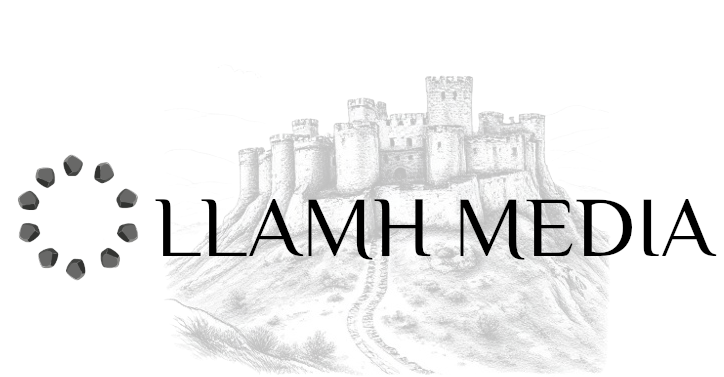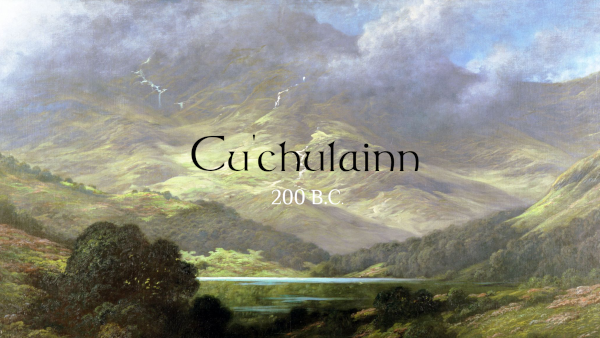“Cú chulainn, “The Gaelic Achilles”
The Beginning
Emain Macha, an ancient Irish stronghold, where the High King Conchobar MacNessa would rule all of Ulster. During the King of Ulster’s reign, his daughter and nobles went hunting magical birds. As snow began to fall, the King and his company seek shelter in a nearby house. Which is now believed to have been the neolithic structure of Newgrange. Within this enchanted place, the wife of their host goes into labour, Conchobar’s wife Deichtine assists her host in the best possible way. In such awe of the newborn, Deichtine insists that she shall raise the child as her own. However the child becomes ill and dies. Lugh, The god of the Irish Gaels appears to Deichtine, “I was your host, you shall now fall pregnant and have a baby boy.” You will name him Setanta!
Setanta’s Early Life
As was the common practice, the Princess would send her son to be raised by another family. The family who raised Setanta, was the family of Amergin and Findchoem, a poet and his wife, in what is now modern County Louth, which then was a part of Ulster. As Setanta grew, he longed to join the famous “Boy-Army” at Emain Macha. The boy-army would train in a field, playing the famous Irish sport hurling. As Setanta arrives un-announced, the boys feel it necessary to attack him. Setanta overpowers them instantly, going into a fit of rage known as “Riastrad”. King Conchobar was watching, wholly impressed by the virility of the youth, he asks Setanta to accompany him to a feast at the residence of Culann. Setanta accepts and makes his way to the feast alone.
The Naming of Cú chulainn
While entering the vast residence of Culann, he is set upon by a ferocious canine, who guarded the residence, with hurling stick still at hand, he throws his “sliotar” into the air and strikes in the direction of the beast, killing it. Now Setanta can pass through the residence towards Culann’s hall. Culann, both devastated at losing his reputable guard and impressed with Setanta seeks a solution. Setanta offers to guard the residence of Culann, as the beast did before, thus adopting the name Cú chulainn, the hound of Culann.
Cú chulainn The Hero
Cu’chulainn, then went on to live a martial life, travelling to Scotland as many Ulster folk before him, training in the harsh environment under the tutelage of Scathach, a mystical female warrior. It was in Scotland, where he met and trained with Ferdiad, another Irish warrior sent to Scotland to learn under Scathach. Ferdiad during this time would become like a brother to Cu’chulainn. All of these adventures prepared Cu’chulainn to become a warrior king in Ulster.
He married an Irish Princess named Emer, who insisted on Cu’chulainn proving his worth, through vigorous trials in which he succeeded. However, he was seduced by a fairy princess named Fand. Emer’s nobility and strength of character would encourage the fairy princess to erase the memory of this ordeal in the minds of both Emer and Cu’chulainn, returning Cu’chulainn to his wife.
The main antagonist of Cu’chulainn’s time was the warrior Queen Meave of Connacht and her allies. One ally of Queen Meabh was Catalan, a great wizard. Cu’chulainn would slay Catalan, which would put a seal on his fate.
During the wars with Meave, in which Cuchulainn would time and time again defend Ulster almost single handed, he would encounter an old friend. However, this time his old friend would return as an enemy.
Ferdiad, from Connacht would be ordered to fight Cuchulainn. Both men were forced reluctantly to fight to the death to defend their cause. Eventually after a long battle between the two, Cu’chulainn would emerge victorious.
“Ah, Ferdiad, betrayed to death”.
“Our last meeting, oh, how sad!”
“Thou to die I to remain”
“Ever sad our long farewell”.
The Death of Cu’chulainn
Long after, Cu’chulainn patrolling the land came across three decrepit old women, who asked him to stop his patrol and eat with them. Cu’chulainn, loyal to the moral code he valiantly upheld, would not refuse their hospitality. Unfortunately for Cu’chulainn, the three women were loyal to Queen Meabh and were out to avenge Catalan. The food was cursed, cursed with a curse to drain Cu’chulainn of his unique strength. Cu’chulainn then left hastily, hoping to return to Emain Macha.
While on his route home he encountered the first son of Catalan, who asked him for a spear, adhering to the moral code again, he accepted the request. He threw the spear at the man, killing him instantly. However, in this incursion he lost his chief Knight.
Further on his way he encountered the second son of Catalan, also asking for a spear, Cu’chulainn this time refused, claiming he had already done enough to satisfy his honour, however the son of Catalan threatened to pillage Ulster on Cu’chulainn’s refusal, so Cu’chulainn loyal to his people threw another spear killing the second son, however in this incursion he was dismounted from his chariot.
Just before he had made his way back to relative safety, lacking strength, the third and final son of Catalan asked Cu’chulainn for a spear, claiming that if Cu’chulainn refused he would attack his family, Cu’chulainn accepted, killing the son but becoming mortally wounded in the process.
Knowing that he was mortally wounded, he crawled to a standing stone to die on his feet. With what strength remained, Cu’chulainn tied himself upright on a standing stone with his sword firmly within his grip. Cu’chulainn would then leave this material plane, his enemies only rejoicing at confirmation of his death when a raven perched upon his shoulder.
Cu’chulainn’s Legacy
Cu’chulainn is undoubtedly the most famous warrior within Gaelic tradition. The Ulster cycle, in which he features may be the oldest vernacular epic in the post-Roman era. In regards to this, we can see how important the idea of Cu’chulainn was to the Gaelic peoples.
In the twelfth century Book of the Dun Cow, Cu’chulainn is summoned from hell by St. Patrick. He was asked to describe the terrors of hell to the pagan king of Ireland Laery MacNeill. As a result, the King was converted to Christianity and Cuchulainn allowed to enter heaven. It is without doubt that when St Patrick was completing his mission in Ireland, he drew upon their ancient traditions understanding how important they were to the Gaels.
When we examine the legend of Cu’chulainn psychologically, we can observe that he lived a great life but ultimately met a tragic end. We will generally consider it a success that he died in honour. However, we cannot ignore that his enemies inevitably over powered him. There was no “happy ending”, for the great hero. We can contest this thought. I personally believe accepting one’s fate honourably is a successful ending.

